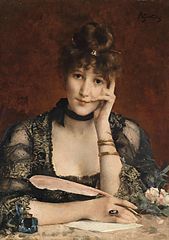Publishing is a lot.
As a friend noted about her own book series, New York Publishing and I had kind of a breakup. Nobody’s fault: we just grew apart. Which is to say that after the publication of Petty Treason, the second of my Sarah Tolerance mysteries, my NY publisher decided not to pick up the third book. Write an historical, they suggested. So I did; Sold for Endless Rue. But I also finished the third book, The Sleeping Partner, which was published by Plus One Press. By that time I had a full time job, a kid who was having Hell’s own case of adolescence, and a sense of depression about my publishing prospects. I really wanted all my Sarah Tolerance books under one roof, as it were–and a roof that would not try to market them as romances (which they are not).
Time goes by. Much water under bridge. Lose one job, get another very absorbing one. Also get absorbed in work with the Book View Cafe writers coop. Child survives adolescence. I leave my involvement in Book View Cafe (again: nobody’s fault; we grew apart). Somehow manage to write a fourth book in the Sarah Tolerance series, and have ideas for a fifth and final book. And finally I retire, look around me, and realize that if I want these books done the way I want them done, I have to take on the lion’s share of publishing them.
At which point I considered hiding under the bed.
When I sold my first book there was no such thing as the internet, let alone social media. The idea was: you wrote a book. If a publisher liked it and bought it, you had some housekeeping things to do (revisions as requested, and reviewing the galleys, and if someone from the publicity office arranged an interview, you did that, too). But overall the job of the writer was to write the book, then write another book, etc., world without end. Well, times change, the internet and social media happen, and even if you have a NY publisher that’s not the way it works now.
In the 1990s I worked for a NY publisher. I am fully alive to the number of things that a publisher does. Acquiring books is only the tip of a significant iceberg. The editorial department does the acquiring, but also helps the author beat the book into publishable shape–which includes developmental editing, line editing, copy editing, and proof-reading. Editorial also helps get the marketing department going by writing (or causing to be written) sales copy, cover copy, and sales catalog materials. Production works on getting the book into physical shape–including working with Editorial on hiring and directing a designer for the cover. But also: getting the book interior designed and typeset and to the printer. Meanwhile, Marketing and Sales are getting the word out, both to the general public (via advertisements and reviews etc.) but to distributors and sellers.
It is a lot. Publishers have many people with skills and experience to do these things. I have… me. And anyone I can hire to take on some of the things I cannot do (it is a very good thing to know what your skill set is and what you cannot reliably do).
I’m not bad at some of the tasks small-press or self-publishing require: I can edit, proof-read and even copy-edit (although that’s generally something I do for other people). I can write cover copy and do cover design (although again, it’s easier when it’s not for my own work). What I find it tremendously difficult to do is the marketing/promotion side of the publishing process. And that is the stuff that many writers do for themselves: drumming up blurbs. Publishing and managing a newsletter. Fan management (a friend last week kept referring to “super fans,” and while I know such entities exist, I have a difficult time believing such people exist with regard to my work).
Take newsletters. I have a newsletter setup to go out Very Soon Now. I intend for it to be quarterly, because honestly I don’t think there’s that much news about my work even when there is news about my work. But there are people who send out newsletters monthly, weekly, even… daily. As one of my own daily chores is to clean out the Augean stable that is my inbox, I can’t imagine anyone would welcome that much contact. Perhaps the mystery inherent in a quarterly newsletter is a good thing?
Or Patreons. I admire the energy that many of my friends put into them, but when I start looking at what is required in terms of upkeep and production–not production of a book or short story, but special bonuses for the kind people who are enthusiastic enough about one’s work to support it… Again, I consider hiding under the bed.
Every writer I know has their own way of approaching promotion. I’m doing the newsletter. I’m not doing a Patreon. Or a kickstarter, at least not right now. The best use of my time is, I earnestly believe, writing. If I want my writing to be seen, I am willing to do some of the other stuff. Just not all of it. And I’m not above considering going back to traditional publishing when I complete the non-Sarah Tolerance book I’ve been noodling on. But that won’t happen until I get the Tolerances out the door.

